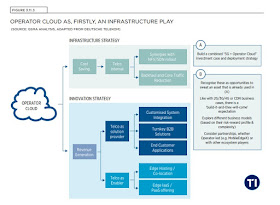We have blogged about Huawei's Book RRUs last year here. Now, Huawei and China Telecom Shenzhen (a.k.a. Telecom Shenzhen) have taken the lead in achieving the global ultra-large scale 3D networking that involves macro and pole base stations in China. Hundreds of 5G C-Band (3.4 - 4.2 GHz) Book RRUs were used to help the operator deliver an undifferentiated experience in 5G-covered areas.
Huawei announced in a press release:
Book RRU is an innovative product that is small in size, lightweight, and easy to deploy. This offers an effective approach of addressing challenges associated with insufficient site resources. 5G Book RRUs enable significant improvements in 5G in-depth coverage and user experience in residential areas while increasing network capacity.
In-depth coverage in residential areas, urban villages, upscale communities, and backstreet alleys is a long-standing challenge which has faced operators. Insufficient resources and difficult acquisition lead to difficult and time-consuming site deployment.
Lightweight 5G Book RRUs enable quick 5G deployment in residential areas by using walls, lamp poles, monitoring poles, and electricity poles as sites. This offers a quick solution to achieving quick deployment, helping eliminate coverage holes and offload network traffic.
In December 2019, China Telecom Shenzhen completed the deployment and verification of the first 5G Book RRU. 4T4R 5G Book RRUs were used in the project.
After the recent 5G Book RRU deployment, tests show showed that the downlink speed exceeds 1.2Gbps on commercial mobile devices (Mate30 Pro) when the network spectrum is 100 MHz. With Book RRU deployment, coverage holes 150 to 200 m away from streets are eliminated and indoor in-depth coverage of low-rise buildings standing 50 m to 100 m above the ground is achieved.
This places the operator in a unique position to meet the capacity requirements in value hotspots in Shenzhen, such as school campuses, office buildings, business districts, and scenic parks. Book RRUs supplement macro base stations with in-depth coverage and hotspot capacity absorption. This improves user experience and releases suppressed traffic while also increasing ROI.
Shenzhen Telecom is the pioneer of digital construction. Under the overall construction plan of the new infrastructure construction China Telecom Shenzhen will continue to collaborate with Huawei to complete quick 3D networking based on 5G standalone (SA) technologies through combined deployment of macro, pole, and indoor products, enabling optimal user experience while securing 5G leadership.
Picture Source: Susan Welsh de Grimaldo
Last year, Huawei gave a tour to analysts in Zurich, Switzerland to show their kit on Sunrise's network. This tweet from analyst Kester Mann, shows two examples of Book RRU deployments for Sunrise network in 3.7 GHz spectrum with local coverage up to 200 metres and speeds recorded above 700 Mbps with 9 milliseconds of latency.
5G network tour with Huawei in Zurich. Two examples of Book RRU deployments for Sunrise network in 3.7 GHz spectrum. Local coverage up to 200 metres. Speeds recorded above 700 Mbps with 9 milliseconds of latency. #HWMBBF #5GGearUp #WirelessIntelligence pic.twitter.com/J7m2paA9ez— Kester Mann (@kestermann) October 14, 2019
Walking tour of #5G sites #Zurich Sunrise 5G Blade AAU helps to get permitted as one antenna unit, and 5G Book RRU ( lamppost with fiber backhaul) @Huawei gear addressing install, maintenance and permitting pain points to improve rollout and cost structure pic.twitter.com/O9lrSFQO7Z— Susan Welsh de Grimaldo (@SWdeG) October 14, 2019
With operators have to provide dense coverage to meet the 5G expectations, we won't be surprised to see more products like these in the near future.
Related Posts:
- Huawei SkySite: Drone with 5G base station & '5G Book' RRU







